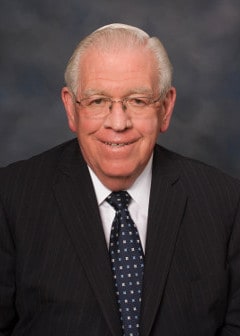Typical. A Sierra Vista Hospital Governing Board member cancels her subscription to the Sierra County Citizen. Instead of engaging with me or the public on setting the record straight, she cavalierly calls me a liar, claiming my last article on the hospital is “a travesty of the truth.”
I’ve written about and done research on the formation of a hospital district many times (see some of the links below). Can we get beyond name calling and killing the messenger? It’s of great importance to our community.
The two boards governing the Sierra Vista Hospital—the Governing Board and Joint Powers Commission—are not telling the people that a hospital district, if formed, will create another taxing district that could levy up to 4.25 mills, which would be on top of the taxes already being levied to support the hospital by Elephant Butte, Truth or Consequences, Sierra County and Williamsburg. The need for more tax revenue, I reassert, is because these same hospital boards bought more hospital than the people’s tax dollars can afford.
If this governing board member actually believes the cover story that both hospital boards have been flogging then she is not doing her job. She has not studied the state laws on hospital districts or hospital finances sufficiently.
The cover story is that there are too many cooks in the kitchen—12 Joint Powers Commissioners and nine Governing Board members. A hospital district would mean that five trustees would be elected to represent the people, the county residents, who own the hospital.
Too many cooks is undoubtedly a problem, but one much more easily solved by changing bylaws and/or the joint powers agreement. Why add another layer of taxing authority and burden onto our already over-burdened poor population?
But hey, don’t believe me. Believe John Arthur Smith, who channeled millions and millions of dollars of capital outlay money into the hospital over the years. Local voters rewarded him by voting him out as our state senator in 2020 after more than 30 years of service.
I interviewed Smith about the hospital shortly after he lost the election.
The article is linked blow, as well as other heavily researched articles I’ve written about the four attempts the two hospital boards have made over the last three years to form a hospital district.
Smith said the hospital boards were “dysfunctional” and members would appear to agree in public but then maneuver and snipe behind closed doors, breaking into vicious factions—kind of like the governing board member calling me a liar in an email to the Sierra County Citizen.
The same kind of secret viciousness pushed out hospital Chief Executive Officer Dee Rush, Smith said.
Rush, agreeing that the boards were dysfunctional, thought private ownership would be better for hospital stability, but potential buyers she approached weren’t interested due to the contentiousness that would likely make sales negotiations too arduous.
Secretiveness and behind-closed-door maneuvering is a result of authoritarian leadership. Authoritarians do not communicate in public or engage the public. They put on a show and espouse feel-good propaganda. I have reported on four counties and eight cities in four states for six newspapers and the leaders and elected officials in Sierra County are the least transparent and least willing to speak with the press. Governing happens behind closed doors here.
How much reporting did the JPC or Governing Board convey to the public on hospital finances in the past or present? I have attended almost every T or C city commission meeting in the last four years and have only heard the occasional and brief statement from City Manager Morris Madrid and then successor Bruce Swingle that the hospital finances are good. Elected officials on the JPC have never given a report. The Governing Board representatives have never given a report.
Elected officials and citizen-appointed representatives in other cities and counties I have reported on give regular, comprehensive and written reports to the people in public meetings.
It is highly unlikely that the elected officials of a hospital district in Sierra County will be any different. I again assert that the point of a hospital district is not to lessen the number of board members, but to increase tax revenue for the hospital.
Or possibly to unload the hospital problems onto unsuspecting elected officials who run for the post without bothering to do their research.
Certainly the JPC and Governing Board will never hold themselves accountable for buying too much hospital, will never inform the public they were bad hospital managers and hence more tax money is needed.
The two boards “borrowed twice what they could afford,” Smith said of the more than $30-million loan taken out to build the new hospital wing.
That wasn’t just Smith’s determination.
Smith brought in the Community Health Services in Deming, an affiliate of Presbyterian Health Services, which consults with hospitals and governments, and David Abbey, director of the Legislative Finance Committee, which Smith chaired at the time. “In 2018 they identified the hospital had way overbuilt more than it could afford,” Smith said.
“The New Mexico Finance Authority never should have given them the loan,” Smith said. “But the Hospital Association said they could afford it.”
The JPC and Governing board are taking advice from the same organization that led them astray on the hospital loan. The Hospital Association is advising a hospital district be formed. See the same Smith-interview article, the first link below.
The 2016 loan was quickly out of compliance—by 2018. Not enough cash reserves had been set aside—a condition of the loan. Smith saved the day. He directed $5 million in capital outlay toward the debt. The 2016 loan was refunded and rewritten by the NMFA, the new loan delaying payments, but requiring even higher cash reserves be put aside—130 percent of the yearly debt.
In 2020 Smith agreed to carry a bill to form a hospital district legislatively instead of forming it through the normal means. Usually the people rise up in a grassroots effort to create a hospital district, circulating a petition to get it on the ballot, building consensus among the community that all should pay taxes to support a hospital.
Smith said the JPC tried to form a hospital district top down because, “They know they will not get the vote because they have 21 people giving all different messages to the public. They want the legislature to do the heavy lifting. But I believe the elected officials should be stepping up to the plate.”
It was a short legislative session in 2020, and Smith and then-Representative Rebecca Dow asked Governor Michelle Lujan Grisham to make the bill one of her “call items” and the governor agreed. But behind-closed-doors calls from hospital board members who were not on board with forming a hospital district made the governor reconsider.
In January 2021 New Mexico Senator Crystal Diamond, (Republican, Elephant Butte) again sponsored a hospital-district bill. It was voted down in committee, other legislators questioning why a hospital district was being created top down instead of grassroots up.
The summer of 2022, the Joint Powers Commission, with Sierra County Commissioner Jim Paxon spearheading the effort, circulated a petition to get it on the November ballot, but failed to get the required 430 or so signatures by the late-August deadline.
The two hospital boards are trying to get the people to sign the petition again—with the same sales pitch about too many cooks in the kitchen.
I reassert that the real problem is debt. The taxes the four owning entities are levying and collecting are not enough to pay for the nut on the new hospital.
Showing poor hospital governance, the hospital boards forgot to renew the Sierra County 2.00 mill levy last year, so no property-tax revenue will be collected this year for the hospital. Despite little to no public outreach by the hospital boards prior to the November 2022 election, the people passed the 2.00 mill levy for another four years with 64 percent approval.
In addition to the mill levy, Sierra County collects .25 gross receipts tax, which is “intercepted” by the state’s taxation department, and rerouted to the New Mexico Finance Authority to pay for debt through 2046, the expiration date of the NMFA hospital loan.
Truth or Consequences has the same intercept agreement with the state and NMFA through 2046 for .1875 gross receipts taxes, as does Elephant Butte. Williamsburg’s gross receipts intercept is .25, also through 2046.
According to the hospital’s year-end audits, (available on the State Auditor’s website) those taxes, from all four entities, totaled $1.48 million in 2022, $1.26 million in 2021, $1.21 million in 2020, $1.17 million in 2019, $905,300 in 2018 and $1.2 million in 2017.
The debt payment on the hospital loan will not be paid off until 2046, and that debt payment to the New Mexico Finance Authority varies, according to year-end audits.
Each year the hospital is adding capital-lease debt to the NMFA loan. According to the 2020 audit, “scheduled” yearly payments for 2021 and subsequent years were $1.493 million. According to the 2021 audit, scheduled yearly payments for 2022 and subsequent years were $1.56 million.
The 2022 audit, the most recent available, did not lump in capital lease payments with the hospital loan. It stated the scheduled hospital loan payments are $1.46 million a year through 2046. The capital lease payments were left vague: “Lease Liabilities – Lease liabilities are due in monthly and quarterly installments including principal and interest at varying amounts from $2,198 to $18,253, including interest at varying rates from 7 to 15 percent through November 2025; collateralized by capital.”
The only year the GRT and mill levy collections were sufficient to pay off the 2018 hospital loan was fiscal year 2021-2022. The GRT may have been up due to people not traveling due to covid.
Dan Weaks, the Hospital Association consultant, advised the hospital boards to push through a hospital district while covid funding made hospital finances unusually fat, “and you don’t have a gun to your head.” (See the Smith article, the first link below).
The 2021-2022 year-end hospital audit, page 11, shows the hospital received nearly $1.1 million in “CARES Act” funding that year and over $2 million the year before.
Even with the CARES Act boost and more GRT money due to covid, the hospital still operated at a loss. On page 13 of the 2021-2022 audit the operating loss for 2022 was over $500,000 and for 2021 over $1.6 million.
Tax revenue isn’t the point of forming a hospital district? I’m a liar? I’m misinforming the public? I think the shoe is on the other foot.


Another good one Kathleen! Self interest and money rules. Sometimes I would like to be a table in the Los Arcos lounge where liqueur and egos meet and listen in on the deal makers. It is certainly not done in the sunlight of open meetings and the interests of the community that continually ‘totes the note’. Sure are a lot of shinny new city vehicles . . . !
You should have named the Sierra Vista Hospital Governing Board member who refuses to engage with the public on this matter.
I disagree. The behind-closed doors dealing of government officials is a major point of the article.
Most Sierra County government officials, like this governing board member, don’t engage in public because it works. The press can’t tell the public what their government is doing and the public can’t know what it is doing, supposedly in their name.
This governing board member made sure she sent a private email to the Citizen calling me a liar and cancelling her subscription. I would not reveal her name any more than I would out other private communications with the Citizen. My article is a condemnation of this private back-room dealing.
I appreciate you submitting a public comment Ariel–in clear contrast to the governing board member.